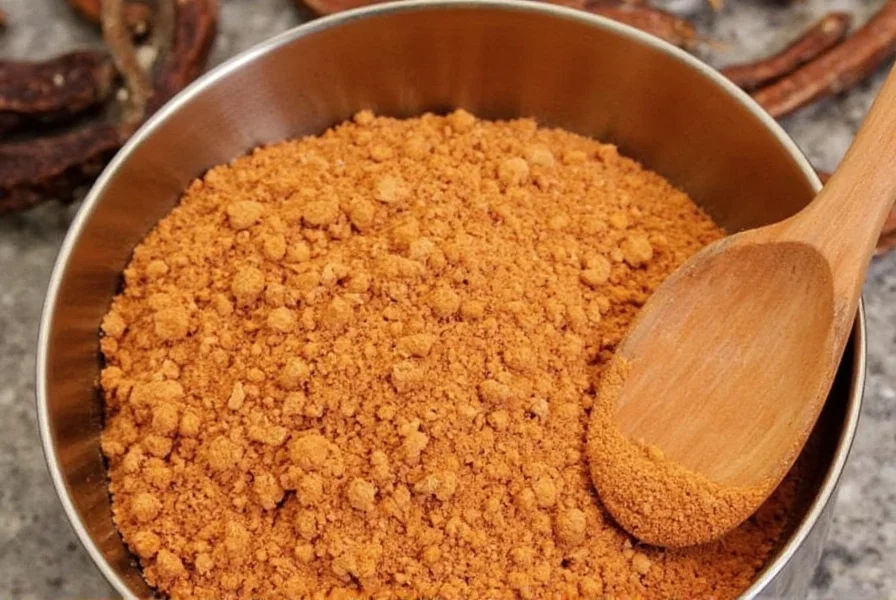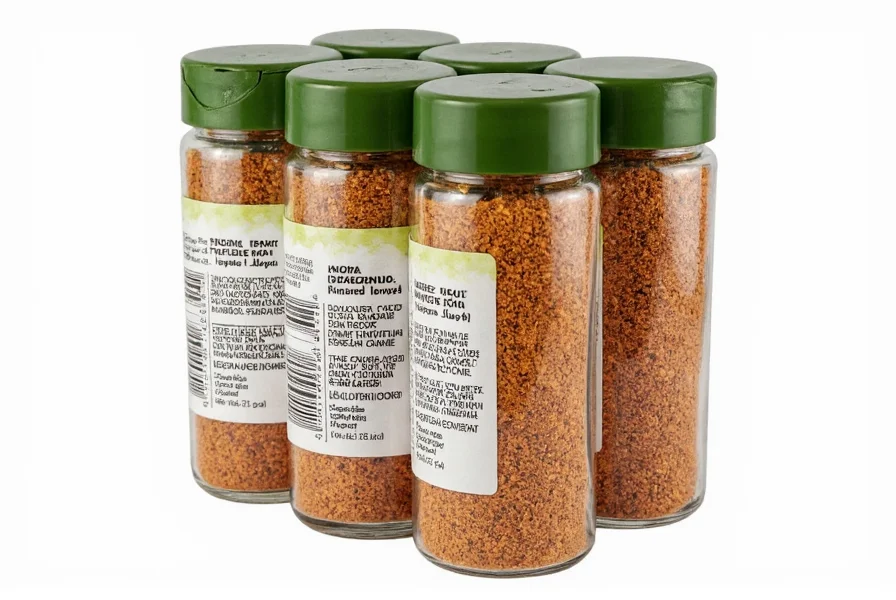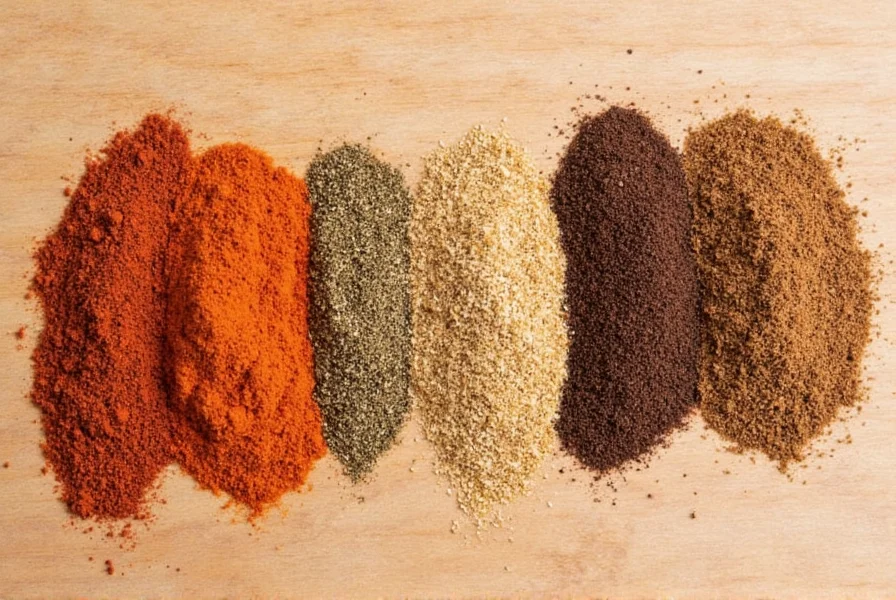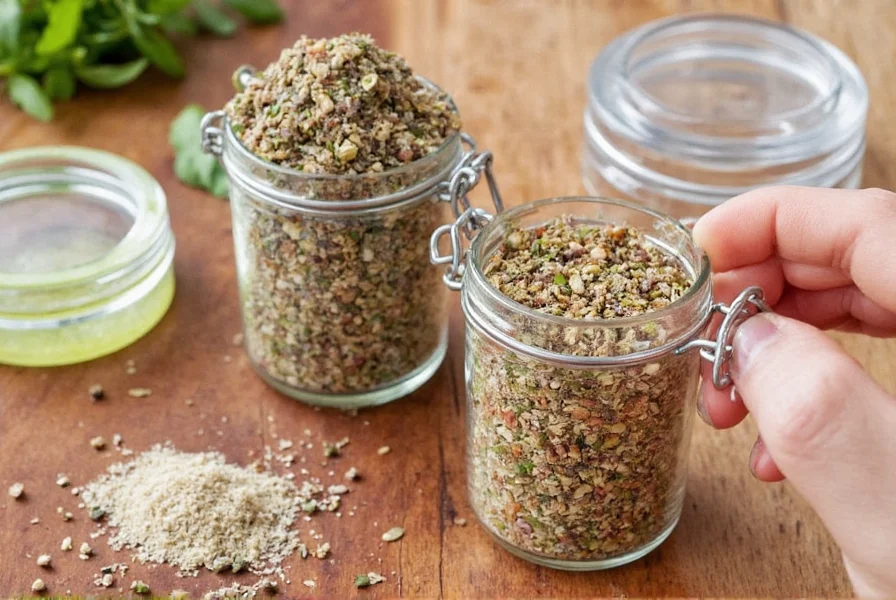Table of Contents
Creol vs Cajun Seasoning: Key Differences Explained
Creol seasoning and Cajun seasoning are often confused, but they have distinct origins and flavor profiles. Creol seasoning originates from Louisiana's Creole culture, which blends French, Spanish, African, and Caribbean influences. It typically includes a balanced mix of paprika, garlic powder, onion powder, cayenne pepper, oregano, thyme, and sometimes bell pepper flakes, creating a complex but not overly spicy flavor.
Cajun seasoning, on the other hand, comes from Louisiana's Cajun culture (French Acadian settlers) and is typically spicier with more black and white pepper, paprika, and less herbs. It often includes more heat from cayenne and less emphasis on herbs like thyme and oregano.
| Aspect | Creol Seasoning | Cajun Seasoning |
|---|---|---|
| Origin | Creole culture (New Orleans) | Cajun culture (Acadian) |
| Flavor Profile | Balanced, complex, less spicy | Spicier, peppery, robust |
| Key Ingredients | Paprika, garlic, onion, cayenne, oregano, thyme | Paprika, black pepper, white pepper, cayenne, garlic, onion |
| Typical Use | Seafood, gumbo, jambalaya, sauces | Grilled meats, roasted vegetables, Cajun dishes |
Understanding these differences helps you choose the right seasoning for your dish. Now, let's dive into proper storage techniques to keep your Creol seasoning fresh.
Proper Storage Techniques for Creol Seasoning
Like all spices, creol seasoning can lose its potency over time if not stored properly. Here are science-backed methods to keep your seasoning fresh and flavorful:
- Airtight Glass Containers: Store your creol seasoning in dark glass jars with tight-sealing lids. Glass blocks light better than plastic and maintains superior airtight seals. Avoid clear glass containers that allow light exposure.
- Optimal Temperature & Location: Keep your seasoning in a cool, dark place between 50-70°F (10-21°C). Store away from heat sources like stoves, ovens, or dishwashers. A pantry shelf away from windows is ideal. Never store in the refrigerator as moisture causes clumping.
- Moisture Control: Add a food-safe silica gel packet to your container to absorb excess moisture. Moisture is the primary cause of spice degradation and clumping.
- Labeling & Rotation: Always label containers with purchase date and contents. Use the "first in, first out" method - rotate older spices to the front. Creol seasoning maintains peak freshness for 12-18 months when stored properly.

By following these storage techniques, you'll preserve the vibrant color and potent aroma of your Creol seasoning for maximum flavor impact in every dish.
Creative Creol Seasoning Recipes & Uses
Creol seasoning transforms ordinary meals into extraordinary dishes. Here are 5 tested recipes with exact measurements:
Creol Spiced Grilled Shrimp (15-Minute Meal)
- Ingredients: 1 lb large shrimp (peeled and deveined), 2 tbsp Creol seasoning, 1 tbsp extra virgin olive oil, 1 tbsp fresh lemon juice, 1 minced garlic clove, pinch of sea salt
- Instructions:
- Combine Creol seasoning, olive oil, lemon juice, and garlic in a bowl
- Add shrimp and marinate for 10 minutes at room temperature
- Grill over medium-high heat for 2-3 minutes per side until pink and opaque
- Serve immediately with lemon wedges and fresh parsley
Creol Roasted Vegetable Medley
- Ingredients: 2 cups chopped vegetables (bell peppers, zucchini, red onion), 1 tbsp Creol seasoning, 1 tbsp olive oil, 1 tsp honey, salt to taste
- Instructions:
- Preheat oven to 400°F (200°C)
- Toss vegetables with olive oil, Creol seasoning, and honey
- Spread on baking sheet in single layer
- Roast for 20-25 minutes until tender and caramelized
- Serve as side dish or over quinoa
Creol Seasoned Popcorn
- Ingredients: 1/4 cup popcorn kernels, 2 tbsp coconut oil, 1 tsp Creol seasoning, 1/4 tsp sea salt
- Instructions:
- Pop kernels in coconut oil using stovetop method
- Immediately sprinkle Creol seasoning and sea salt while hot
- Toss gently to distribute evenly
- Serve immediately for best flavor

These recipes showcase Creol seasoning's versatility. The key is to start with small amounts and adjust to taste - its complex flavor builds beautifully in dishes without overwhelming other ingredients.
Spice Storage & Usage Hacks for Everyday Cooking
Pro Storage Techniques
- Labeling System: Use a label maker with date stamps for all spice containers. Write "Opened: [date]" to track freshness.
- Small-Batch Buying: Purchase only what you'll use in 3-6 months. Large containers exposed to air degrade faster. Store bulk spices in freezer and transfer small amounts to kitchen containers.
- Freshness Test: Rub a pinch between fingers - if aroma is weak or color faded, it's time to replace. Fresh Creol seasoning should have vibrant red-orange color and strong herbal aroma.
Smart Usage Tips
- Layering Technique: Add half the seasoning at the beginning of cooking and the rest near the end for maximum flavor impact.
- Oil Activation: Mix Creol seasoning with oil before adding to food. This helps release the aromatic compounds and distributes flavor evenly.
- DIY Blend: Make your own Creol seasoning: 2 tbsp paprika, 1 tbsp garlic powder, 1 tbsp onion powder, 1 tsp cayenne, 1 tsp dried thyme, 1 tsp dried oregano, 1/2 tsp black pepper. Adjust cayenne for heat preference.

These professional kitchen techniques maximize flavor while minimizing waste. Proper storage and usage can extend your Creol seasoning's potency by up to 50% compared to improper storage.
Buying Guide: Choosing the Best Creol Seasoning
Not all Creol seasonings are created equal. Here's how to identify quality products:
Key Quality Indicators
- Ingredient List: Look for whole spices listed first (paprika, garlic, onion). Avoid products with fillers like maltodextrin or artificial flavors. The best blends contain only spices and herbs.
- Color & Aroma: High-quality Creol seasoning has vibrant red-orange color from paprika and visible herb flecks. It should have a strong, complex aroma when opened.
- Packaging: Choose products in airtight containers with resealable closures. Glass jars or metallized bags with oxygen absorbers preserve freshness best.
- Brand Transparency: Reputable brands list sourcing information (e.g., "paprika from Spain") and manufacturing dates. Avoid products with vague "spice blend" descriptions.
| Product Name | Key Features | Quality Indicators | Best For | Where to Buy |
|---|---|---|---|---|
| Zatarain's Creole Seasoning | Traditional New Orleans blend | Visible herb flecks, vibrant color, no fillers | Seafood, gumbo, jambalaya | Supermarkets, online |
| McCormick Gourmet Creole Seasoning | Smoky, balanced flavor profile | Single-origin spices, no artificial additives | Grilled meats, roasted vegetables | Specialty grocery stores |
| Penzeys Spices Creole Blend | Premium hand-blended spices | Transparent sourcing, small-batch production | Gourmet cooking, restaurant-quality dishes | Penzeys website, specialty stores |
| Spice Islands Creole Seasoning | Consistent flavor, widely available | Quality-controlled ingredients, airtight packaging | Everyday cooking, budget-friendly option | Supermarkets, online |
When purchasing, check the expiration date and avoid products with clumping or dull color. For the best experience, buy from retailers with high turnover to ensure freshness.
Frequently Asked Questions About Creol Seasoning
What's the difference between Creol and Cajun seasoning?
Creol seasoning originates from New Orleans' Creole culture and typically includes paprika, garlic, onion, cayenne, oregano, and thyme for a balanced, complex flavor. Cajun seasoning comes from Acadian culture and is spicier with more black pepper, white pepper, and less herbs. Creol has more herbs and less heat, while Cajun is more peppery and robust.
How long does Creol seasoning last?
When stored properly in airtight containers away from light and heat, Creol seasoning maintains peak flavor for 12-18 months. After this period, it won't spoil but will gradually lose potency. For maximum freshness, replace annually and always check color and aroma before use.
Is Creol seasoning gluten-free?
Yes, pure Creol seasoning made from only spices and herbs is naturally gluten-free. However, check labels for potential cross-contamination if you have celiac disease. Reputable brands like Penzeys and Spice Islands offer certified gluten-free options.
Can I use Creol seasoning as a salt substitute?
No, Creol seasoning contains some salt but not enough to replace table salt entirely. It's designed to complement salt, not replace it. For salt reduction, use Creol seasoning to enhance flavor while decreasing added salt by 25-50%.
What dishes work best with Creol seasoning?
Creol seasoning shines in seafood dishes (shrimp, crawfish), gumbo, jambalaya, and tomato-based sauces. It also works wonderfully with roasted vegetables, grilled chicken, soups, stews, and even popcorn. Its balanced flavor profile makes it versatile for both traditional Creole dishes and everyday meals.
Why does my Creol seasoning clump together?
Clumping indicates moisture exposure, usually from improper storage. Always store in airtight containers away from humidity. If clumping occurs, break up lumps with a fork or add a food-safe silica packet to your container. For severely clumped seasoning, it's best to replace it as flavor may be compromised.
Conclusion
Creol seasoning is more than just a spice - it's a cultural treasure that brings authentic Louisiana flavor to your kitchen. Understanding the key differences from Cajun seasoning, proper storage techniques, and creative usage methods ensures you get maximum flavor from every pinch.

By following this comprehensive guide, you've learned how to identify quality products, store them properly, and use them in delicious recipes. Remember: great cooking starts with quality ingredients and proper care. With Creol seasoning as your secret weapon, every meal can be transformed into something extraordinary.
So next time you're cooking, reach for your Creol seasoning with confidence. Whether you're making seafood gumbo or simply spicing up roasted vegetables, you now have the knowledge to use it perfectly. Happy cooking!










 浙公网安备
33010002000092号
浙公网安备
33010002000092号 浙B2-20120091-4
浙B2-20120091-4